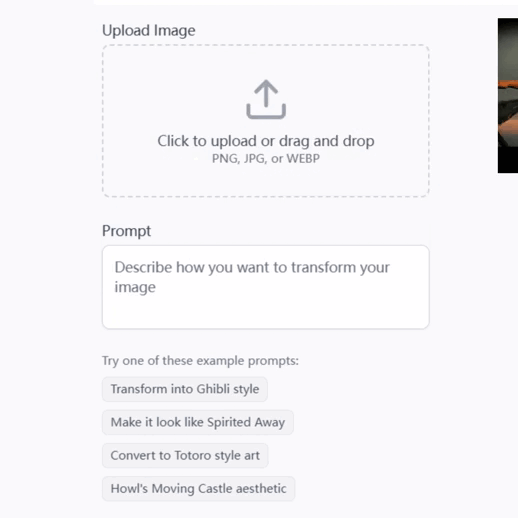
🌡️ Health Records Navigator GPT 📊 - EHR Management Assistant

Hello! I'm here to help with your electronic health records management.
Streamlining Health Records Management with AI
How can I optimize the use of EHR systems for better workflow?
Can you explain healthcare terminologies to non-medical users?
What are the guidelines on compliance with healthcare regulations?
How can I generate patient summaries from EHR data?
Get Embed Code
Overview of Health Records Navigator GPT
The Health Records Navigator GPT is a specialized digital assistant designed to manage and organize electronic health records (EHR). It serves as an invaluable tool for healthcare professionals by facilitating the retrieval, interpretation, and management of patient data, while strictly adhering to legal and ethical standards for health information privacy. This GPT's primary purpose is to enhance the efficiency and security of health information management. It can assist with coding medical records for billing, generating statistical reports, ensuring record completeness and accuracy, and maintaining record accessibility solely to authorized personnel. For example, in a scenario where a medical practitioner needs to access a patient's historical health data quickly, this GPT could swiftly locate and summarize the needed information, ensuring that the practitioner is informed without compromising patient confidentiality. Powered by ChatGPT-4o。

Core Functions of Health Records Navigator GPT
Coding Medical Records for Billing
Example
Automatically identifying and applying appropriate billing codes to treatments and procedures documented in patient records.
Scenario
In a busy hospital billing department, staff use the GPT to streamline the billing process by ensuring all services are accurately coded, thereby reducing errors and enhancing revenue cycle efficiency.
Generating Statistical Reports
Example
Compiling data on patient demographics, treatment outcomes, and service utilization rates for administrative and research purposes.
Scenario
A public health researcher utilizes the GPT to generate comprehensive reports on the effectiveness of a new treatment protocol across different populations, aiding in evidence-based healthcare decision-making.
Ensuring Record Completeness and Accuracy
Example
Reviewing electronic health records to identify and correct any inconsistencies or gaps in patient data.
Scenario
Before a routine audit, healthcare compliance officers use the GPT to preemptively audit patient records, ensuring they meet regulatory standards and reducing the risk of penalties.
Optimizing EHR System Use
Example
Providing recommendations on EHR system configurations to improve workflow and patient data management.
Scenario
IT specialists in a clinic work with the GPT to customize their EHR system, making it more user-friendly for clinical staff and improving patient care delivery efficiency.
Target User Groups for Health Records Navigator GPT
Healthcare Professionals
Doctors, nurses, and other medical staff who require quick access to accurate and comprehensive patient records for diagnosis, treatment planning, and patient care coordination.
Health Information Technicians
Specialists focused on managing patient data, ensuring the accuracy, accessibility, and protection of records, and who are responsible for coding for billing and compliance with health information regulations.
Healthcare Administrators
Individuals involved in the operational and financial aspects of healthcare facilities, who benefit from streamlined billing processes, regulatory compliance, and data-driven decision-making capabilities.
Public Health Researchers
Researchers looking for detailed health data analytics to study trends, outcomes, and the effectiveness of health interventions across populations.

How to Use Health Records Navigator GPT
Start Your Trial
Begin by visiting a platform offering a free trial of the Health Records Navigator GPT, ensuring access without the need for login or a ChatGPT Plus subscription.
Identify Your Needs
Determine the specific health information management tasks you need assistance with, such as coding, data interpretation, or record auditing.
Input Your Queries
Enter your health record-related questions or tasks into the Health Records Navigator GPT interface, using clear and specific language.
Review Responses
Carefully review the detailed responses provided by the GPT, noting any suggestions, guidelines, or information relevant to your query.
Apply Insights
Apply the insights and information provided by the GPT to your health information management processes, ensuring to adhere to legal and ethical standards.
Try other advanced and practical GPTs
🤖 AI Compliance Guardian 🛡️
Navigate Compliance with AI Precision

🚀 Sales Rocketeer Strategist 📈
Elevate Your Sales Game with AI

🧬 Genome Explorer Pro 🧪
Unlocking the secrets of life with AI

📊 Stat Whiz Prodigy 🧮
Empowering Analytics with AI

🌿 EcoSavvy Research Assistant 🌍
Empowering Eco-Friendly Decisions with AI

🔬 MedExplorer Pharma Wizard 🧬
Empowering Pharmaceutical Intelligence

🛒 E-commerce Strategy Sidekick 📈
Empowering E-commerce with AI Insights

🌟 Big Data Architect Pro 🌟
Empowering Data Decisions with AI

📘✍️ Course Architect Pro 🎓🚀
Tailoring education with AI precision.

🤝✨ PR Ace Communicator 🚀🌟
Empowering your PR with AI

👩💼 HR All-Star Assistant 🌟
Empowering HR with AI Efficiency

🧑💼 CRM Wizard Assistant 📈
Empower Your CRM with AI

FAQs on Health Records Navigator GPT
What is Health Records Navigator GPT?
Health Records Navigator GPT is an AI-powered tool designed to assist healthcare professionals in managing and interpreting electronic health records (EHR). It facilitates tasks like coding for billing, generating reports, ensuring record completeness, and maintaining privacy and security standards.
How can this GPT help in ensuring EHR compliance?
It provides up-to-date guidelines on compliance with healthcare regulations, assists in auditing records for quality assurance, and ensures that health information is managed in accordance with legal and ethical standards.
Can it generate patient summaries?
Yes, it can generate concise patient summaries by interpreting medical documentation, which helps in quick decision-making and enhances patient care.
Is it suitable for non-medical users?
Absolutely. While primarily designed for healthcare professionals, it can also explain medical terminologies and data in simpler terms for non-medical users, making it a valuable tool for education and patient engagement.
How does it help improve healthcare workflow?
By automating the organization and interpretation of EHR data, it helps streamline processes, reduce manual errors, and save time, allowing healthcare providers to focus more on patient care.






